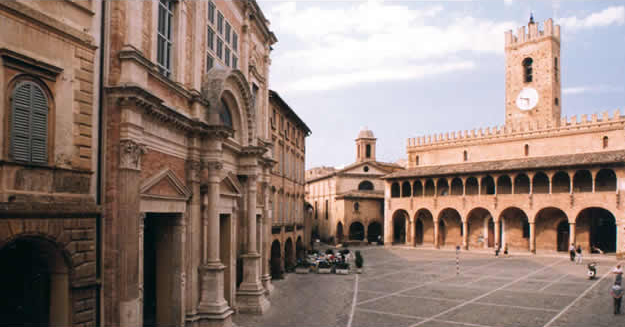FEATURES
A DOC was created in 2001, whose name is derived from the name of the municipality of Offida. It is a tripartite DOC, comprising two types of white wine, Offida Pecorino and Offida Passerina, and a black wine, Offida DOCG Rosso. In 2011, this denomination gained the status of DOCG – Denominazione di Origine Controllata e Garantita.
The amendment of the regulations also regulated the presence of Montepulciano, which must not be less than 85%. This Montepulciano is the second most cultivated black grape in Italy, preceded only by Sangiovese.
Its dominant presence in Offida DOCG Rosso wines determines these peculiar characteristics: ruby red colour with a tendency towards garnet; on the nose, notes of red fruits and hints of liquorice and chocolate stand out; soft and ample on the palate, these wines have a very long aftertaste.
TERRITORY
Offida, pronounced with the accent on the i, is a town in southern Marche, in the province of Ascoli Piceno. About 290 meters above sea level, L’ufid (so in Offidan dialect) is located on the ridge of the band of hills that divides the valley of the Tronto River from the valley of the Tesino River.
Since 2008 Offida has been one of the “Most Beautiful Villages in Italy” and preserves a historic center of splendid harmony, rich in architectural and artistic points of interest.
Not to be missed is the almost dreamlike vision of the church of Santa Maria della Rocca, an imposing Gothic mass that stands out in the void, “precariously clinging to a rocky spur marked by deep gullies that give the landscape a hostile and ghostly aspect, in contrast to the gentle slopes cultivated with vines that characterize the surrounding hills” (Stefano Papetti, from Flash magazine, 203, 1995).
Not to be missed is the Offida Historical Carnival, a testament to popular folklore that is still very much alive today.
